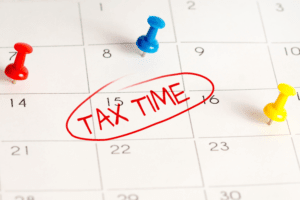
We may earn a commission when you click on a link or make a purchase through the links on our site. All of our content is based on objective analysis, and the opinions are our own. If you want to learn accounting with a dash of law firm chart of accounts humor and fun, check out our video course.

Contributed Capital (also referred to as Paid in Capital)
Thus, the above are some important differences between the two statements, which are integral part of financial reporting. The entity only raised an amount of $25,000 from investors and had a withdrawal of $5,000. Hence, though the capital went up, it was not due to the company’s operations; hence, it is very hard to make any opinion about this business. In this example, the company raised an amount of $10,000 and also earned an income of $20,000. It can be said the company has good prospects and is valued high among investors who agreed to invest $10,000 in the company. The withdrawals are very meager as compared to the overall spike in figures.

Starting Points: Beginning Balance and Capital Contributions
This is one calculation that many small business owners overlook as they don’t understand the value of monitoring to assess changes over time. Because of this, the statement of owner’s equity is often viewed as the connecting link between the income statement and balance sheet. This statement is crucial because it provides owners with financial information to make important business decisions. It can also give the opening balance of the owner’s equity, explanations for increases and decreases during the accounting period, and the closing balance. Preferred stock has unique rights that are “preferred,” or more advantageous, to shareholders than common stock. Unlike common stockholders, preferred shareholders typically do not have voting rights and do not share in the common stock dividend distributions.
Ask a Financial Professional Any Question
It could indicate potential solvency issues, meaning your business might not have the legs to meet its obligations in the long run. Many businesses rebound by adjusting strategies, improving cash flow, or finding new capital injections to resuscitate equity back into the What is bookkeeping positive. This concept is important because it represents the ownership interest in a company and is a key metric for evaluating the financial health of a business.
Company
Owner’s equity plays a crucial role in financial analysis as it provides valuable information about a company’s financial health and its ability to meet its financial obligations. It represents the residual claim on assets that remains after all liabilities have been settled. The main financial statement user is shareholders – owners of the company – and equity is super important to them. For example, shareholders may want to know if the company sold or repurchased shares, what their ownership interest is, and how much they have earned on the money they’ve paid into the company. A Statement of Owner’s Equity is a financial statement that presents a summary of the changes in the shareholders’ equity accounts over a given period. The first line of the statement provides the balance of each segment as of the first day of the period.
During the period, you might inject additional funds to spur growth or cover expenses, and these capital contributions boost your equity—and thus the equity show beginning with a stronger footing. Whether it’s an injection of cash or assets, every dime you add increases your stake in the business. So if you started with an equity of $20,000 and added another $5,000 during the year, your equation begins with $25,000 before considering other changes like profits or withdrawals. The starting point of the owner’s equity equation is the beginning balance, which is essential in demonstrating the equity show beginning and setting the stage for financial analysis. This figure reflects the total value your business held at statement of stockholders equity the end of the last period, effectively capturing the equity show beginning. If it’s the company’s first year, this number would understandably be $0, but otherwise, it’s the ending balance from the last year—a springboard for the current period’s finances.

Equity Capital:
It starts with the beginning balance of shares and retained earnings, describes how and why the balance of each equity type changes over the period, and then gives the ending balance. The statement of owner’s equity portrays changes in the capital balance of a business over a reporting period. The concept is usually applied to a sole proprietorship, where income earned during the period is added to the beginning capital balance and owner draws are subtracted. The amounts for liabilities and assets can be found within your equity accounts on a balance sheet—liabilities and owner’s equity are usually found on the right side, and assets are found on the left side. On the flip side, the owner’s equity statement is like a mini-biography, telling the story of how your stake in the business has evolved over a set period.
- To summarise the examples mentioned above, we can categorize the effects on the Statement of Owner’s Equity into business transactions.
- Treasury stock is shares that were outstanding and have been repurchased by the firm but not retired.
- Non-cash assets can also be used to make capital contributions to businesses.
- If your liabilities are higher than your assets, your equity will be negative, which could mean financial trouble.
It maps out the trajectory of investments, earnings, and distributions, putting up signposts that signify how and why your ownership’s value changed. Think of it as the lifeline of your financial contribution, tracing from the opening balance to the closing equity. The income statement addresses your business’s operational efficiency, the balance sheet shows financial solidity, and the statement of owner’s equity details the narrative of your investment over time. Tracked over a specific timeframe or accounting period, the snapshot shows the movement of cashflow through a business. The owner’s equity statement is one of four key financial statements and is usually the second statement to be generated after a company’s income statement.
